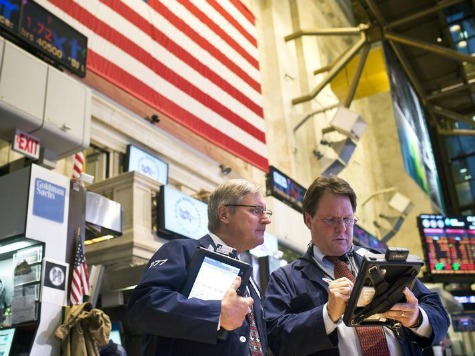
Our financial system is in such a state of myopia that rather than eyeing corporate earnings and other barometers of economic health, the market is solely fixated on how much longer the Fed is going to continue with its Quantitative Easing program, or as I like to call it, “The Misallocation-of-Resources-Olympics.”
Reading from the playbook Financial Steroids for Dummies, the Fed (and the rest of the world’s central bankers, for that matter) has decided that the stock and real estate bubbles were not enough. So, it has embarked on the pièce de résistance, a debt bubble.
When you have $85 billion a month flowing into the debt markets, designed specifically to suppress interest rates, major misallocations of capital are bound to happen. The sheer size of the Fed’s monthly purchases dwarf normal allocations of capital to a point where the masses are choosing to surf the wave of the Fed’s liquidity injections, rather than focus on prudent long-term investing. What does all this mean? Essentially, the Fed is caught in a trap of its own design, where it becomes impossible for them to exit the market–because they effectively are the market.
Many participants, from pension fund managers to individual mom and pop households, are hoping they will be smart enough to know when to hop off their financial surfboard before it crashes on the rocky shores of reality. Chronic unemployment, falling earnings, declining home ownership, all mean nothing when compared with the “taper, or not to taper” decision. This vast experiment of coordinated financial juicing has replaced the conversational norm of the recent past that primarily focused on whether or not the Fed would be setting rates a few basis points higher or lower. These days, the Fed is playing chicken with the market, and games of chicken usually end badly.
As you’re reading this, high-frequency trading algorithms are scanning the headlines by the nanosecond on the lookout for any sign that tapering will begin, so they can then front-run the stampede for the exits. We got a taste of this back in early summer before the Fed had to talk the market off the ledge with its flip-flop on how quickly it would begin tapering. The Fed has painted itself into a corner, where just the mere mention of slowing the flow of financial juice can send markets cratering, creating a negative feedback loop.
Remember, debt, in and of itself, isn’t the problem. It’s the fact that the added debts aren’t spent on actual “investments” that create efficiencies. The Fed’s hope all along was that the low rates and access to cash would create a multiplier effect throughout the economy, but in today’s environment it is barely moving the needle. Increasing amounts of the cheap money sloshing around is not being used for traditional investing, as much as it is being misallocated toward speculation.
Earnings expectations for world GDP, as well as individual firms, have been trending down over the last half-year as many come to realize the days of rolling debts to lower and lower interest rates may now be over. Rather than focus on the reality of what rising rates could do to profit margins, the “no taper” crowd is going all-in with their equity holdings, pushing valuations ever higher.
We have now had 27 months where the market hasn’t had a correction of even 10%. Stretched valuations have grown so high, relative to earnings, that Ray Dalio, of the largest hedge fund, Bridgewater Associates, expects stocks to average 4% per year for the next decade. Jeremy Grantham of GMO, one of the better forecasters out there, is calling for less than 4% returns per year for US equities over the next seven (personally, I am thinking 6%, with bonds being less than 2.5%). Tapering will bring headwinds to earnings–headwinds that will eventually suppress earnings. Tapering looks like it will be the lynchpin to begin any meaningful correction, but until then it’s, “Party on, Garth”.
What the Fed has done with these policies, instead of correcting fundamental structural problems in the financial system, was create asset bubbles and help widen the wealth divide between the masses. The largest benefactors have been the big banks, large investors, and large corporations that have the best access to leverage the Fed’s financial steroid program. Andrew Huszar, the man responsible for managing the Fed’s purchases of over 1.25 trillion dollars in mortgage backed securities, recently apologized to the country, stating QE is “the greatest backdoor Wall Street bailout of all time”.
As for the next generation, their collective lives are now on hold. This will further retard any real growth prospects the country had, since young adults living at home under mountains of school debt are not too anxious to buy homes, get married, or start families.
The Aztecs used to sacrifice their youth to placate their Gods. As we financially sacrifice our youth today on the alter of debt, the only ones clearly benefiting are those that can use this artificial stimulus to re-inflate their investment portfolios, as well as bail out the poor choices of their elders who refused to live within their means. Taper or not, this Depression 2.0 will probably be with us for much longer than we care to admit. The beginning of taper may very well be the beginning of the end, which is why it will probably go on much longer than the officially stated policy.

COMMENTS
Please let us know if you're having issues with commenting.